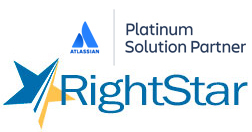Building efficiency throughout the agency is the promise of Agile. Agile methodologies work because they empower teams, and empowered teams are more successful. Time-consuming traditional work methods are replaced by outcome-driven “sprints” in which self-directed cross-functional teams plan, prioritize, estimate, build, test and learn together. Team commitment to scope and timing is the hallmark of Agile, where a team includes all stakeholders involved in the delivery of products and services – not just coders and testers.
Although Agile was initially focused on software development, it is proving highly effective for delivery of services as well. Management, human resources (HR), marketing, IT services and even financial management teams are embracing the mindset and practices of Agile. Let’s look at how.
Management teams create strategies to meet mandates and achieve an agency’s mission. At the program and portfolio level, they watch budgets, staffing and risk. They need real-time visibility across the organization to understand how all work impacts agency goals and objectives. Agile’s focus on constant communication up and down the hierarchy helps keep everyone on the same strategic page.
Product managers and line-of-business managers are typically the project owners. They’re responsible for overall product direction. A product means any result of a project, whether it’s software, a new business process or some other capability.
Development teams build, test and deploy the product. An Agile process requires the development team to actively solicit stakeholder input regularly throughout the process. This reduces surprises and makes sure that what they are implementing is actually what the customer wants at every step of the process.
Infrastructure teams are responsible for delivering a product stably and securely, such as making a software application available over a network. Using traditional methods, the infrastructure team often learn about performance, availability, stability and security requirements too late, forcing them to work in crisis mode and miss deadlines on competing projects. Agile promotes continuous communication so that the infrastructure team is always “in the know” and has time to react to changing requirements.
Journey teams are all about the customer. A journey usually has members from different parts of the project – such as development, management, and so on. This team might engage experts to address technology questions, or it may run tests and pilots before a product is rolled out to general users.
Lastly, non-development teams, such as marketing, HR and contracts, benefit from adopting an Agile mindset to help them better plan, manage and meet their commitments to the agency.
As an agency moves along the path of Agile adoption at the team level, it faces the problem of how to scale Agile to different segments of an agency; in other words, remaining aligned to agency goals as more teams become self-directed in execution. For agencies whose software teams have adopted an Agile mindset, the next step is expanding Agile to embrace the entire agency.
This article is an excerpt from GovLoop Academy’s recent course, “Building Efficiency Throughout the Agency With Agile,” created in partnership with RightStar and Atlassian. Access the full course here.






Leave a Reply
You must be logged in to post a comment.